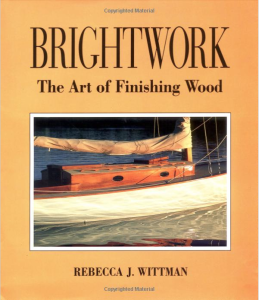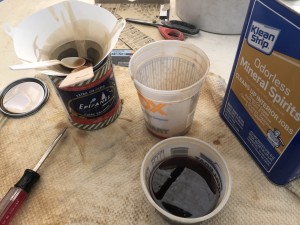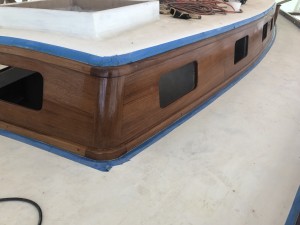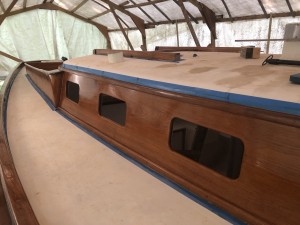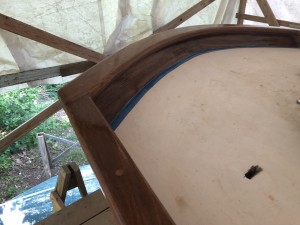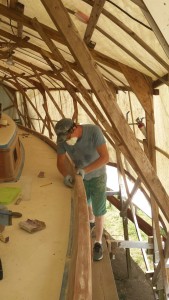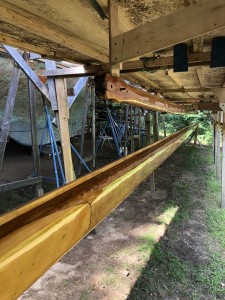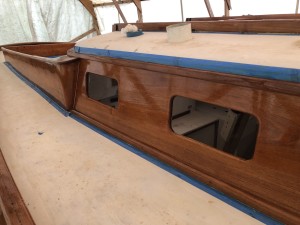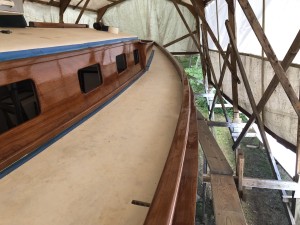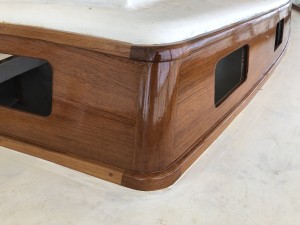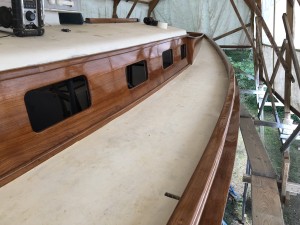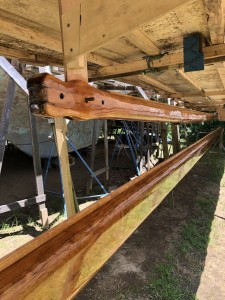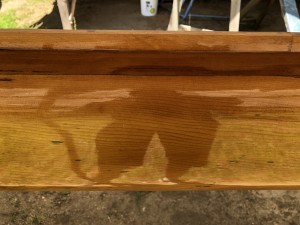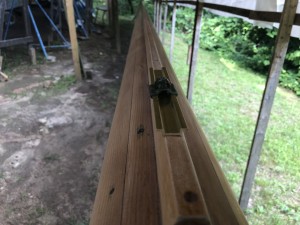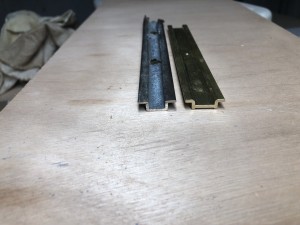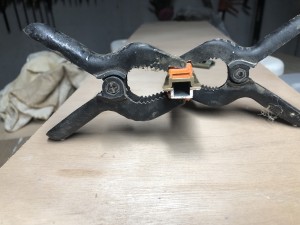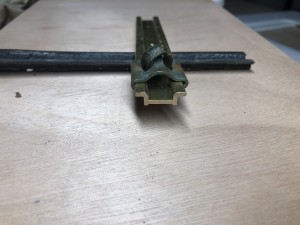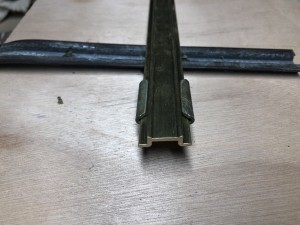7/14/19: Varnishing II
I’ve read a lot about varnishing over the years, and have done a lot of varnishing. With the looming prospect of varnishing the vast expanses of the masts, house, and rails, I thought it was a good time to purchase the well-known “bible” of varnishing, BRIGHTWORK, by Rebecca Wittman:
Even after only skimming the pages I’ve found it to be a source of education and inspiration. On the education side, for example, I learned that varnishing first then painting creates a cleaner line where brightwork meets a painted surface. This is my program anyway, but I was doing to for different reasons.
On the side of inspiration, I quote a paragraph in the dedication section:
“…the essence of this “folk art” is found in the direct effect each phase of refinishing has on the next laborious pursuit. The element of time has an unswerving way of exposing every change of heart, every lapse of energy, every omission of thought in the commission of our refinishing tasks. Like skins of an onion, the layers of our refinishing efforts can be peeled back to betray our degree of commitment, or lack thereof.”
That settles it. I am a varnisher, and until the end of my days I will be continuously varnishing. Exterior brightwork requires 1-2 fresh coats annually, and for varnishing season (roughly April-October) I will develop a logical schedule.
All this might seem like and overbearing burden, but it’s really no different, and probably less overall work, than the commitment one makes to keep a clean house, or well-manicured lawn or garden.
The technique of varnishing could be a long discussion. Briefly, though, the goal is to apply as thick a coat as possible, because buildup is the goal. Lay it on even a little too thick, however, and everything but a horizontal surface will have runs and sags–and those are very time consuming to sand out. It’s also crucial to keep a “wet edge” whereby you’re only stroking into wet varnish. This is a lot trickier than it sounds, especially in hot weather, because brushed varnish begins to get tacky fast. I find it critical to alway use two brushes, except on very small jobs. One brush sits in thinner (mineral spirits) while the other is in use. When the one in use starts to drag, swap it out for the one in thinner (being sure to spin it out into a bucket with a brush spinner). While all this is going on, I’m also continuously tweaking the varnish mixture by adding thinner to keep it near the ideal consistency, which is highly variable depending on temperature, humidity, and whether or not the work is getting direct sun.
Anyway, here’s the house with 4 coats…
…and the rails with 6.
As usual, sand between each coat. No exceptions.
And the masts with 7…
…and the house with 5…
After 7 coats on the rails, and 5 on the house, I pulled the tape.
At this point I will turn my attention to roof, decks, and topsides, then do final varnish coats in the Fall.
Similarly, I temporarily suspended my efforts on the masts at 9 coats.
I will apply a finish coat or two after reinstalling the hardware and rigging. Speaking of hardware, I’ve been in communication with Jim Reineck, of JM Reineck & Son about bronze track for the main mast. The original track, while probably salvageable, is bent in many places, and broken in one. Jim did a run of 7/8 track this winter, and he was kind enough to send me a sample, which you see in the pictures below. The mainsail slides fit it perfectly, and the in some of the pictures below I’ve included a piece of the original track for comparison. I’ll return to the subject of the mainsail track in a future post.
